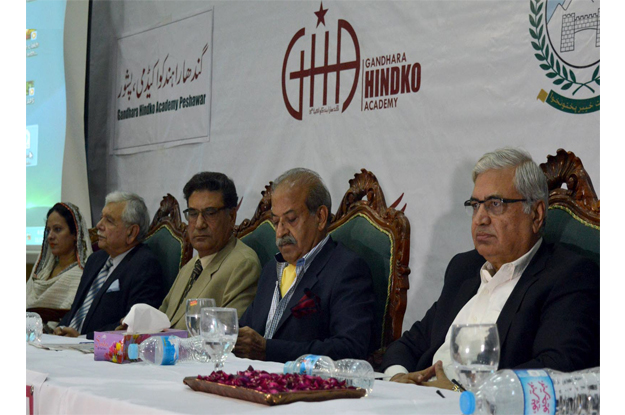
The third international Hindko conference will promote Hindko and all other Pakistani languages. This was evident from the title of the conference. The event was initiated at the Archives Hall in Peshawar on Saturday.
“Hindko is the second widely spoken language of Khyber-Pakhtunkhwa after Pashto and is the oldest language of the region,” said Shujaat Ali Rahi, a poet. “However, little work has been done in the language. Hindko has maintained its separate entity despite being one of the leading languages in the region.”
On the occasion Hindkowan researchers discussed the issues pertaining to the language, its literature, history and role in the civilisation through their papers. On the first day, over a dozen researchers presented their papers. Hindko writers also held discussions on Sufism. A majority of them said that in all the three divisions of the province where there is a Hindko-speaking population, there is a famous Sufi poet. “In Peshawar, there is Sayee Ahmad Ali in Hazara,” one of the writers said. “Meanwhile, in DI Khan, there is Ghulam Faqir Dervi.”
In archives
Participants drew attention to the fact that the first Hindko dictionary was compiled by a linguist, Sultan Sakoon, in 2003 and a second version was published in 2007. Recently, the Gandhara Hindko Academy has published its third edition.
“Until the dictionary was released we relied on the Punjabi language dictionary,” said Rashid Qureshi, from Hazara division.
Qureshi also announced the formation of the Gandhara Hindko Board. “There is a pressing need to do more research and add more words to the Hindko dictionary to keep the language alive for the generations to come,” he said.
Mirror to society
Hindko writers from other parts of the country were also present at the conference, Parveen, a short story writer from Attock, talked about Hindko folk literature. “Folk literature is a reflection of our society,” said Parveen. “Although we do not know much about its writers, the language is a treasure for us from the days of yore.” However, she added, research should be conducted on folk literature to learn about the bygone days of Hindko culture.
Significant factors
Participants at the conference also discussed the need to develop avenues to learn the language in various parts of the province. “There are limited opportunities to even gain basic education in the language in Kohistan,” said Nasir Daud, a professor. “How can the literature in Hindko emerge from such places?”
He added there was no difference between Hindko and Gujri languages in the past. “However, it has now been made clear that both languages are different from each other,” Daud said. “Both languages have coexisted for centuries due to which they have adopted each other’s elements.”
He said there are some differences between the languages. Through his research the professor has proved there is a difference of nearly 35% in words of the language. “The coexistence of a variety of languages adds to the beauty of society,” Daud added.
Published in The Express Tribune, November 22nd, 2015.


1730752226-0/Untitled-design-(35)1730752226-0-165x106.webp)






1730706072-0/Copy-of-Untitled-(2)1730706072-0-270x192.webp)
COMMENTS
Comments are moderated and generally will be posted if they are on-topic and not abusive.
For more information, please see our Comments FAQ